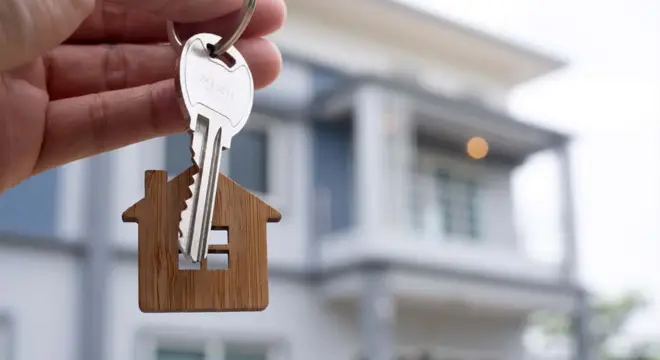Repairs After Home Inspection: 10 Red Flags Buyers Can’t Afford to Miss
I’ve seen it happen more than once — buyers get their home inspection back, skim through the red flags, and assume it’s all just “negotiation stuff.” But some repairs aren’t just about price. They’re about safety, long-term costs, and protecting yourself from nasty surprises after closing.
If you’re buying a home and you’ve just wrapped the inspection, this is the moment where smart decisions matter. Think of the report as more than a list — it’s your cheat sheet for avoiding future headaches, from blown-out HVAC systems to hidden mold behind the drywall.
This article isn’t about scaring you. It’s about showing you exactly what you shouldn’t ignore, and why.
These aren’t cosmetic issues — they’re the kind of problems that can drain your wallet, compromise your safety, or even delay your closing. I’ll also walk you through how to negotiate repairs the right way, when to ask for credits instead, and how to make sure everything’s buttoned up before you sign those final papers.
Let’s break it down, one critical repair at a time.
Quick gut check: When you read your inspection report, what’s the one item that made you pause? Something that felt… off?
Drop it in the comments — you’re probably not the only one dealing with it.
What Repairs Are Actually Required After a Home Inspection?
Here’s the truth most buyers don’t hear upfront: sellers are not legally required to fix anything after a home inspection — at least not in most states.
Unless your state laws or purchase agreement say otherwise, everything is negotiable. That’s exactly what your inspection contingency is for. It gives you the right to walk away if something serious shows up and the seller won’t address it.
So no, the seller doesn’t have to replace that leaking water heater or upgrade the electrical panel. But you also don’t have to move forward if you feel the risk outweighs the value.
The key is knowing what’s worth negotiating, what’s worth walking from, and what’s not worth stressing over. If you’re still in the early stages, make sure you’re asking the right things — these 12 smart questions to ask your home inspector can help uncover dealbreakers before it’s too late.
According to Forbes: “There are no federally mandated repairs required after a home inspection. All post-inspection repairs are negotiable between buyer and seller.”
This is where many buyers go wrong — they treat the inspection report like a to-do list for the seller. It’s not. It’s a risk assessment tool for you. And while not every defect is a dealbreaker, some absolutely should not be ignored.
If you’re unsure where to draw that line, the next part will help you break it down into clear priorities — safety, systems, and long-term costs.
What stood out in your inspection? Something that made you stop and think twice?
You’re probably not overreacting. Let’s take a closer look at what really deserves your attention.
How to Prioritize Repairs That Actually Matter
Not every defect is a big deal. But certain issues should immediately raise a red flag — not because they’re expensive, but because they affect your health, safety, or the structural integrity of the home.
Here’s how to think about it:
- Health and safety risks come first. – Anything that could harm you or your family — electrical hazards, mold, carbon monoxide risk, unstable stairs, or pests — should be non-negotiable. These aren’t optional upgrades. They’re issues that could make the home unlivable or dangerous.
- Critical systems are next. – Problems with the roof, plumbing, HVAC, electrical system, or foundation often hide bigger costs. If any of these systems are near failure or out of code, it’s not just a repair — it’s a liability.
- Then look at lifespan and long-term value. – A 20-year-old water heater that’s rusting? An aging HVAC that’s on its last cycle? Even if they’re technically “working,” these systems are close to failure and replacement should be part of your cost calculation — or negotiation.
What doesn’t belong in the “urgent” category?
Small cracks in paint. Loose cabinet hinges. Minor drywall scuffs. Cosmetic flaws don’t change how the home functions or how safe it is. If you focus on everything, you’ll lose leverage where it counts.
Here’s the takeaway: When you ask for repairs, anchor them to real risks. Sellers are much more likely to respond when you prioritize like a professional — not like a picky buyer.
10 High-Priority Repairs You Should Never Ignore
Let’s get practical. These are the top 10 issues that should always give you pause if they show up in your home inspection report. They’re not just common — they’re often deal-changers.

- Mold, moisture intrusion, or water damage – These aren’t just cosmetic — they can point to roof leaks, faulty plumbing, or drainage issues. Left unchecked, they lead to rot, health risks, and thousands in hidden repairs.
- Electrical hazards – Exposed wires, outdated fuse boxes, overloaded circuits, or missing GFCI outlets in kitchens and bathrooms — all of these pose fire risks. Electrical issues are one of the top causes of home fires in the U.S.
- Roof damage – A compromised roof doesn’t just leak — it can destroy insulation, drywall, and flooring. Replacing a roof can cost $8,000 to $15,000, so you want a clear picture before closing.
- Foundation cracks or movement – Not all cracks are serious, but horizontal ones or stair-step patterns often indicate shifting — which can make the entire structure unstable. Repairs here are costly and time-sensitive.
- HVAC issues – Heating and cooling are essential, especially in extreme climates. If the system is 15–20 years old or not functioning properly, you’re looking at a high-ticket replacement.
- Plumbing problems – Leaks, outdated materials (like polybutylene), poor water pressure, or signs of previous water damage should never be ignored. Plumbing repairs can be disruptive and expensive — especially inside walls or under slabs.
- Pest infestations (especially termites or rodents) – Termites can quietly destroy wood framing and compromise the structure. Even minor infestations may require professional treatment and repairs.
- No legal egress from bedrooms – A bedroom window that doesn’t open wide enough for emergency escape? That’s a safety code violation in most areas — and it can delay appraisal or loan approval.
- Asbestos or lead-based paint (in older homes) – Found in many pre-1980s homes, these materials are not always dangerous unless disturbed — but if you’re planning renovations, they can quickly become a health hazard and a legal issue. If you’re buying a home built before the 1980s, you’ll want to read these tips for buying an older home to avoid hidden hazards and unexpected costs.
- Exterior safety issues (broken handrails, unsafe steps, sidewalk hazards) – Anything that could cause a fall or injury may create liability issues for you as the future homeowner. This is especially important if the seller hasn’t kept up with basic maintenance.
Each of these issues is a signal: either negotiate a credit, ask for licensed repairs, or seriously consider whether the home is still worth it.
How to Negotiate Repairs Without Losing the Deal
By now, you probably have a short list of serious issues from the inspection. The next step isn’t to hand over a laundry list and demand everything gets fixed. That’s the fastest way to lose a deal — or get ignored.

A smarter move? Focus on the essentials and negotiate from a place of clarity, not emotion.
Decide: Ask for Repairs or Ask for a Credit?
Both options have pros and cons. Here’s how I break it down with my clients:
- Ask for repairs if the work is straightforward, time-sensitive, or something you’re not equipped to handle post-closing (like a leaking roof or major electrical hazard).
- Ask for a credit if you want control over the quality, timing, and contractor. Credits also help avoid delays, since sellers often cut corners when rushing to meet deadlines.
Most experienced buyers prefer credits for bigger repairs — especially when it comes to HVAC replacement, foundation work, or roof damage.
Back Your Requests With Facts, Not Emotion
Don’t just say, “This looks dangerous.” Attach a quote from a licensed contractor, or reference building code violations if they apply. Keep it calm, reasonable, and documented.
If a repair will cost $4,000, show where that number came from. You’re more likely to get what you ask for when it’s clear and backed by evidence — not opinion.
According to data from Clever Real Estate, 83% of buyers request some kind of repair or credit after the inspection, and most sellers expect it.
You’re not being difficult — you’re protecting your investment.
Don’t Overplay Your Hand
Yes, you have leverage during the inspection period — but don’t let it go to your head. If you treat every item as a dealbreaker, you’ll lose the seller’s willingness to work with you.
Pick your battles. Stick to safety, systems, and structure.
And always remember: negotiation isn’t about winning. It’s about moving forward without regret.
How to Back Up Your Repair Requests with Real Data
It’s one thing to ask for a $5,000 credit. It’s another to show why that credit is fair — with numbers, expert input, and even social proof from other buyers.
This is where many buyers drop the ball. They make repair requests based on what “feels unfair,” but smart sellers (and agents) respond better when you bring receipts.
1. Use Contractor Estimates or Ballpark Pricing
Before you ask for anything major, get a contractor quote or even a quick estimate from a trusted source. You don’t need a full inspection — just a basic cost breakdown to show the financial impact.
For example:
- “Roof inspection shows missing flashing, active leaks — $3,800 estimated replacement.”
- “HVAC system flagged as 17 years old and leaking refrigerant. New install = $5,000 average in this region.”
Even attaching a screenshot of a regional average (from HomeAdvisor, Angi, or Lowe’s) helps validate your request.
2. Point to Code Violations or Safety Standards
Sellers may push back on cosmetic flaws — but they can’t argue with fire hazards or building code issues.
If your report mentions:
- Missing GFCI outlets near sinks
- Loose wiring or outdated fuse boxes
- No egress in basement bedroom windows
These are hard safety concerns. Back them with a line from your state or city code if needed. This shifts the conversation from “opinion” to “compliance.”
3. Quote What Other Buyers Are Dealing With
You’re not alone — and when you show that, it makes your requests sound reasonable.
Here’s a real Reddit post from a homebuyer negotiating their inspection:
“I only asked for electrical panel upgrade and GFCIs. Didn’t want to overwhelm the seller. We got a $3K credit and fixed everything properly post-close.”
Using this kind of social proof sends a message: you’re being fair and measured — not trying to squeeze the seller.
4. Use Market Data Strategically
In a buyer’s market, sellers are more likely to negotiate. In a hot market, they may push back harder — but that doesn’t mean you stop asking. You just adapt your tone.
Tip: Instead of saying, “You need to fix this,” try:
“Given the cost of this repair and the age of the system, we’re requesting a credit to move forward comfortably.”
It sounds respectful, but still gets the job done.
Don’t Skip This: The Final Walkthrough Isn’t Just a Formality
You’re almost at the finish line. Closing day is around the corner, your loan is lined up, and the seller has agreed to repairs or credits. It’s tempting to coast through the final walkthrough — but this is the moment where many buyers let big problems slip through the cracks.
Here’s what the final walkthrough is (and isn’t):
- It’s not a chance to reopen negotiations.
- It is your last shot to confirm that everything the seller agreed to — including repairs — has actually been done.
What to Bring and What to Look For
Go in with your original inspection report and a copy of the repair agreement (or credit summary) in hand. You’re checking for:
- Completed repairs (if seller agreed to fix anything)
- No new damage since your last visit
- Systems still working properly (lights, HVAC, appliances, water pressure, toilets)
- Receipts or invoices for any contractor work
If something was fixed, but looks half-baked — like a roof patch with mismatched shingles or loose outlet covers — say something. You don’t want to inherit sloppy work that costs you later. Once you’ve done your final walkthrough and closed the deal, don’t just grab the keys and rush in — here are 10 important things to do immediately after buying your home that most new owners forget (and regret).
What If Something’s Missing?
Let’s say the seller promised to replace the water heater, but it’s clearly the same old rusty tank. You have a few options:
- Delay closing until the work is done
- Ask for an escrow holdback (a portion of the seller’s proceeds is held until the issue is resolved)
- Negotiate a last-minute credit (if both sides agree and the lender allows it)
None of these are ideal — which is why showing up with a checklist, a clear head, and 30–45 minutes of uninterrupted time is so important.
As Better Homes & Gardens puts it: “The final walkthrough ensures the home is in the condition agreed upon. It’s the buyer’s last chance to confirm that everything is as expected before closing.”
This isn’t just a box to check. It’s your last layer of protection.
When It Feels Overwhelming, Zoom Out
If you’re feeling drained right now, you’re not alone.
The inspection phase is where a lot of buyers lose momentum. Suddenly, the house you loved looks like a pile of problems. You’re staring at repair estimates, pushback from the seller, and wondering if you’re making a huge mistake.
Take a breath.
This process isn’t meant to scare you off — it’s meant to give you options. You’re not locked in yet. You’re still in control. The goal isn’t to buy a perfect home. It’s to buy a home with your eyes open.
Here’s what you shouldn’t do:
- Don’t ignore serious risks just to “keep things easy.”
- Don’t try to fix everything before closing.
- And don’t lose sight of the bigger picture: you’re buying a home, not negotiating a construction site.
Focus on the stuff that truly matters: safety, major systems, and anything that could snowball into bigger costs after closing.
Negotiate what’s fair. Document what’s promised. And trust yourself to walk away if the math — or the risk — no longer adds up.
Buying a home should make you feel empowered, not stuck.
Want more smart tips for buyers? Visit Build Like New for expert guides, checklists, and home-buying strategies that actually help.
Disclaimer: This article is for informational purposes only and does not constitute legal, financial, or real estate advice. Always consult with a licensed professional in your area before making property-related decisions.


